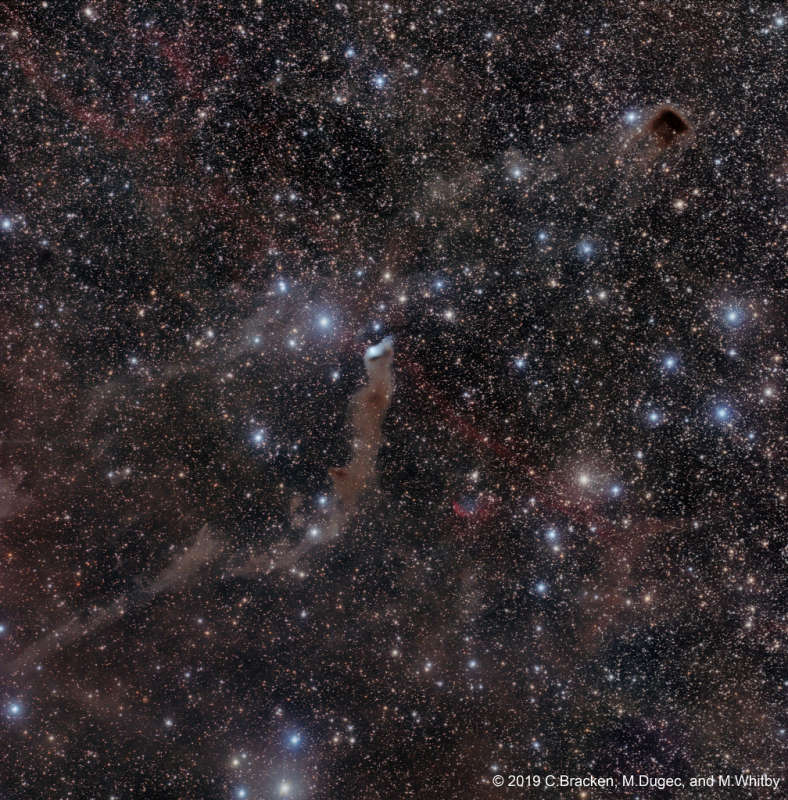Credit & Copyright: Charlie Bracken,
Mladen Dugec, Max Whitby
Explanation:
The
mysterious blue reflection nebula found in catalogs as VdB 152
or Ced 201 really is very faint.
It lies at the tip of the long
dark nebula Barnard 175 in a
dusty complex that has also been called
Wolf's Cave.
At the center of this deep and widefield telescopic view,
the cosmic apparitions are
nearly 1,400 light-years away along the northern Milky Way
in the royal constellation Cepheus.
Near the edge of a large molecular cloud,
pockets of interstellar dust in the region block light from
background stars or scatter light from the embedded bright star
giving the the nebula its characteristic blue color.
Ultraviolet light from the star is also
thought to cause a dim reddish
luminescence in the nebular dust.
Though stars do form in
molecular clouds, this star
seems to have only accidentally wandered
into the area, as its measured velocity through
space is very different from the cloud's velocity.
Another dense, obscuring dark nebula, LDN 1221, is easy to spot
at the upper right in the frame,
while the more colorful planetary nebula
Dengel-Hartl 5 is just below center.
Faint reddish emission
from an ancient supernova remnant
can also be traced
(lower right to upper left) against the dust-rich complex in Cepheus.
1999 2000 2001 2002 2003 2004 2005 2006 2007 2008 2009 2010 2011 2012 2013 2014 2015 2016 2017 2018 2019 2020 2021 2022 2023 2024 2025 |
Январь Февраль Март Апрель Май Июнь Июль Август Сентябрь Октябрь Ноябрь Декабрь |
NASA Web Site Statements, Warnings, and Disclaimers
NASA Official: Jay Norris. Specific rights apply.
A service of: LHEA at NASA / GSFC
& Michigan Tech. U.
|
Публикации с ключевыми словами:
reflection nebula - dark nebula - отражательные туманности - темная туманность
Публикации со словами: reflection nebula - dark nebula - отражательные туманности - темная туманность | |
См. также:
Все публикации на ту же тему >> | |
